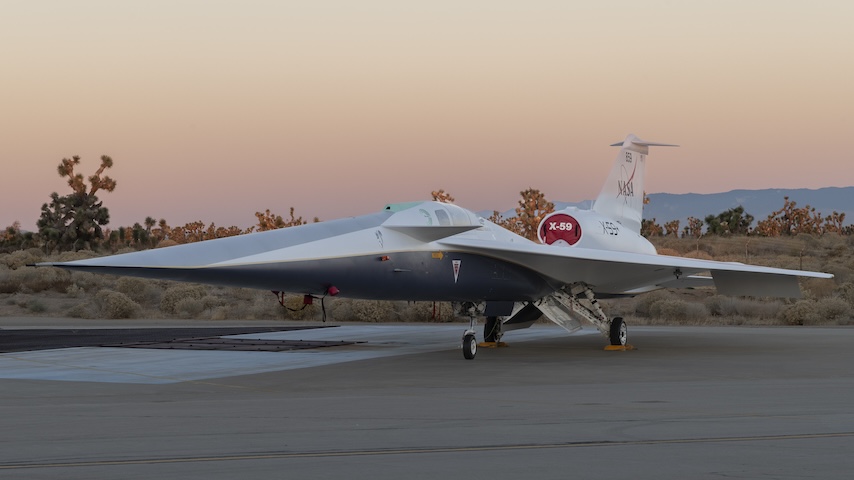Revolutionizing Hypersonic Travel
Revolutionizing Hypersonic Travel


A Houston-based startup is one step closer to commercializing hypersonic travel and one-hour flights to anywhere in the world.
In 1947, the Bell X-1 Glamorous Glennis made history as the first plane to surpass Mach 1, reaching a maximum speed of 700 mph. The North American X-15 aircraft, a collaboration between the US Air Force and NASA, set records in 1967 as the fasted manned aircraft, achieving Mach 6.71 with a top speed of 4,520 miles per hour at an altitude of 102,000 feet. Even though numerous planes such as this have been developed in the following decades, modern passenger aircraft still don’t exceed the speed of sound. Flights from San Francisco to Tokyo take 11 hours, and Houston to London takes 9 hours. But imagine if each of these flights could be reduced to just one hour.
That’s the aim of Houston-based startup Venus Aerospace, with its Stargazer aircraft—what the company touts as the first reusable, hypersonic aircraft that will make one-hour global transportation commercially viable. Venus launched in 2020 with a goal of tackling the challenges of hypersonic flight, reaching speeds from Mach 5 to Mach 10.
On the way toward that goal, Venus’s 8-foot, 300-pound unmanned drone achieved a significant milestone on February 24, 2024, with its inaugural supersonic flight test. The air-launched drone accelerated to Mach 0.9 for 10 miles at 12,000 feet. It maintained 80 percent engine thrust to stay below Mach 1, demonstrating flight control and stability. For this initial test, a hydrogen peroxide monopropellant engine was used instead of the rotating detonation rocket engine (RDRE).
This test marked the initiation of multiple test flights aimed at validating the company’s design considerations for overcoming the hypersonic flight challenges.
Advanced engines
Venus plans to launch Stargazer from a primary airport with jet engines, then when away from city-center, its rocket engine will propel passengers gently to 170,000 feet and Mach 9, to travel 5,000 miles in 1 hour.
Today, pulse detonation engines (PDE) are widely used in aircraft, reaching hypersonic speeds up to Mach 5, and boasting greater efficiency than turbojet engines. However, further advancements are necessary to increase speed.
“The big bright tail coming off of a rocket is actually the thermal energy we were unable to extract into thrust,” explained Andrew Duggleby, chief technology officer at Venus.
In a PDE, fuel and oxidizer mix within the combustion chamber. As gases fill the chamber, a spark ignites them, and the flame front travels towards the opposite end of the tube at supersonic speeds, propelling the engine (and everything attached to it) in the opposite direction. The fuel mix released and ignited in several pulses per minute, earning the engine its name.
“Imagine pouring a line of gasoline on the road and then you light it on one side. That flame slowly moves across the line of gasoline. The gasoline's not moving, but the flame front is. Detonation is hitting the right conditions with a flame front that it switches from a slow-moving front to whoosh, and it detonates,” explained Duggleby.
To manage the combustion process, the chamber undergoes purging between pulses, potentially resulting in wasted fuel when non combusted gases are expelled. The combustion tubes must also be elongated to achieve supersonic combustion, resembling a series of pipes extending from the engine’s rear.
As for Venus’s RDRE, it operates under a similar concept to the PDE engine, igniting the fuel and oxidizer mix in a ring-shaped channel instead of a tube. Eliminating the need for purges between cycles, RDREs allowed multiple flame fronts to “chase” each other around the ring.
“The rotating detonation is continuous. It’s constantly pushing propellant out and the detonation waves are going around like a hungry, hungry hippo,” explained Duggleby.
RDRE’s theoretical efficiency gains are forecasted up to 35 percent with the same fuel quantity as PDEs, though practical increase range between 10-15 percent due to design and engineering limitations. Efficiency can be improved by switching from constant volume to constant pressure combustion. However, the PDE engine uses a fixed fuel volume, with pressure fluctuating as the detonation wave pulsed. In contrast, the RDRE engine maintains a continuous detonation wave, keeping pressure constant in the combustion chamber.
The Stargazer’s bipropellant RDRE, powered by hydrogen peroxide and jet fuel, delivers 15 percent more thrust than traditional rocket engines while accommodating jet engines and landing gear for departure and arrival, as well as wings and safety systems.
Challenges remain
Achieving hypersonic flight will require addressing heating, structural, fuel capacity, and handling challenges. Stargazer employs heat-pipe technology to capture and expel heat from air compression and friction at the aircraft’s skin. This ensures durability at high temperatures and faster turnaround times between flights.
Handling and stability considerations are paramount at speeds nine times the speed of sound, requiring flight controls to be incredibly fast and finely tuned for smooth operation. The Stargazer addresses these concerns by utilizing two engines operating at different speeds, with traditional jet engines used for takeoff and landing, and rocket engines kicking in once the aircraft was airborne and safe from city centers.
“The challenge of trying to go hypersonic is that a jet engine will get you from Mach 0 up to Mach 2 1/2. But it’s too hot for the jet engine at Mach 2 ½. There's a gap between where a jet engine can take you and where a ramjet could start around Mach 3 ½,” explained Duggleby. Although Venus aims to eventually eliminate the turbine engine entirely and accomplish takeoff, landing, and flight solely with the RDRE engine.
Overcoming obstacles such as these are bringing one-hour global transport one step closer. Venus Aerospace's successful supersonic flight test is a notable milestone, showcasing technological prowess and it might just have the potential to revolutionize global transportation.
Nicole Imeson is an engineer and writer in Calgary, Alta.




